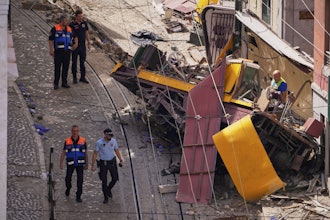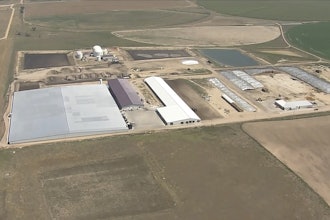
 Michael Allen, President, Z-AXIS, Inc.
Michael Allen, President, Z-AXIS, Inc.An electronics contract manufacturer started out with a project to upgrade its workbench lighting to LEDs, and instead found an opportunity to upgrade the entire workbenches for less than the cost of commercial industrial fixtures.
Z-AXIS has been building electronic products in our contract manufacturing facility near Rochester, New York since 1989. Over that time we have steadily modernized equipment and reconfigured the work floor to adapt to new technology and to our customers’ changing needs.
And over that time, we have acquired many different types of workbenches with a wide range of overhead fluorescent light fixtures.
Upgrading to LED lighting, we could have simply replaced the fluorescent tubes with LED tubes. This would have been the fastest, easiest, and lowest-benefit option. The fixtures would still have ballasts, which waste a lot of energy and will burn out well before the LED tube does. We could rewire the fixtures to bypass the ballasts, but we’d still be settling for new technology in old packaging.
The second option was to replace the fluorescent fixtures with something that looks very similar, like industrial-style commercial LED shop lights. This is new technology in old-style packaging. As such, the packaging retains many of the disadvantages of the old technology:
- The large fixtures block the overhead lights and cast shadows on workspaces when off
- They shine light in all directions—including into workers’ eyes—instead of on the workpiece
- They collect dust on top
And they would be time-consuming to install, since we would need to configure several different types of mounting systems to fit the various workbench styles.
 Three of the many different workbench fluorescent lighting mounting systems before the upgrade.
Three of the many different workbench fluorescent lighting mounting systems before the upgrade. The new workbench frames with integral LEDs
The new workbench frames with integral LEDs We began to see a real opportunity to get far greater improvements from this LED lighting project than we had at first imagined, by changing our systems - in this case, the workbenches themselves—rather than force- fitting new technology into our old systems.
Our manufacturing engineers designed a new workbench frame using commercially available extruded aluminum T-channel structures. The frame holds an LED light strip we designed and manufacture in-house. It also holds the polycarbonate safety shield that is needed between facing workstations.
Our electrical engineers designed the LED light strip and a constant-current LED driver. They chose high-end LEDs with integral lenses so that all the light is directed down onto the work area without the need for reflectors. They chose LEDs with a warm color temperature for light that is pleasing to humans. These two features add a bit to the cost and reduce a bit from the efficiency compared to the cheaper LEDs commonly used on lighting strips, but are worth it for the increase in worker comfort. And they are still miles better than fluorescents.
The new lighting fixtures deliver twice the light to the work area, using one-sixth of the energy of the old fixtures (15 W instead of 90 W). The LEDs last 15 to 20 years, versus two or three years for fluorescents.
The new workbench frames with integrated lighting allow a clear, uncluttered view across the work area, so line managers can more easily monitor workflows and spot problems early.
The total cost of the new LED lighting and frames is less than the cost of retrofitting industrial LED fixtures to the existing bench frames.
This experience illustrates the benefit of a systems-wide approach to manufacturing facility updates. Rather than executing a narrowly defined project, look at how it fits in the larger system and you may find opportunities for greater improvement at lower cost.
Michael Allen is the president, Z-AXIS, Inc.






















